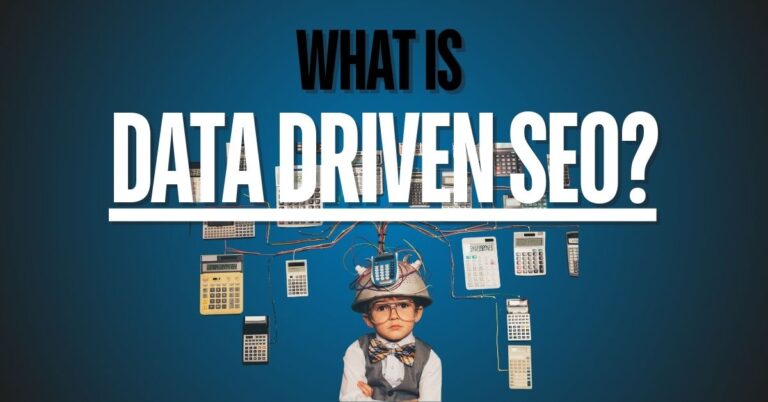SEO Attribution Explained: Are Your SEO Efforts Really Working?
Have you ever wondered which of your SEO efforts are truly driving sales?
Maybe you’ve noticed a spike in traffic after tweaking some content or witnessed a surge in sales following an SEO campaign, but you’re not quite sure which specific actions deserve the credit.
Understanding the impact of each element of your SEO strategy on your bottom line can often feel like trying to solve a puzzle with pieces scattered across different marketing channels.
This is where SEO attribution steps in.
In this guide, we’ll break down the essentials of SEO attribution, explore different models, and show you how to apply these insights to your marketing efforts.
Get ready to align your SEO strategies with real results, making every effort count towards your business goals.
What is SEO Attribution?
SEO attribution dives deep into the journey your customers take, pinpointing which SEO strategies—be it clever keyword use, compelling blog content, or on-point meta descriptions—really drive traffic and conversions.
It tracks the customer’s journey from the moment they find you in search results to when they make a purchase.
This insight lets you focus on what works best and improve or remove what doesn’t.
Example
To make it clearer what ‘SEO Attribution’ is, here’s an example:
Consider a software company, “TechSolutions,” that offers a project management tool. A potential customer, Alex, goes through the journey that includes multiple interactions with TechSolutions’ online presence:
Initial Discovery
Alex searches for “best project management tools” on Google and clicks on TechSolutions’ blog post titled “Top 10 Project Management Tools for 2024.” This is the first touchpoint, driven by SEO efforts targeting relevant keywords.
Content Engagement
Impressed by the content, Alex explores other blog posts and resources on the website, each optimized for search engines to enhance visibility and user engagement.
Email Subscription
After reading several articles, Alex subscribes to TechSolutions’ newsletter to receive updates and more information.
Direct Visit
A week later, Alex receives a newsletter featuring a case study about a company similar to his own using TechSolutions’ tool. He clicks the link and visits the website directly.
Free Trial Sign-Up
On this visit, Alex decides to sign up for a free trial of the project management tool.
In this scenario, SEO attribution involves analyzing Alex’s journey to determine how much credit SEO should receive for the conversion (free trial sign-up).
By implementing an attribution model, such as the linear model, TechSolutions can assign equal credit to each touchpoint:
- Blog Post Visit (SEO): 25% credit
- Subsequent Blog Engagement (SEO): 25% credit
- Newsletter Subscription (Email): 25% credit
- Direct Visit Leading to Sign-Up: 25% credit
This analysis reveals that 50% of the credit for Alex’s conversion is attributed to SEO efforts, highlighting the significant role of SEO in attracting and nurturing potential customers.
By employing SEO attribution, TechSolutions gains insights into the effectiveness of their SEO strategies, enabling them to optimize content, allocate resources efficiently, and enhance overall marketing performance.
Why is SEO Attribution Important?
We’re going to highlight the importance of doing SEO attribution based on Alex’s journey through TechSolutions. Here are the top three reasons why implementing SEO attribution is important:
Optimizing Marketing Strategies
SEO attribution allows businesses to identify which SEO activities effectively drive conversions.
By analyzing customer journeys, companies can determine the most impactful touchpoints and allocate resources to strategies that yield the highest returns.
In the example of Alex and TechSolutions, understanding that 50% of the conversion credit is attributed to SEO efforts highlights the importance of investing in high-quality content and keyword optimization.
Measuring Return on Investment (ROI)
Assigning value to SEO activities enables businesses to calculate the ROI of their organic search efforts.
By quantifying the contribution of SEO to conversions, companies can justify investments in SEO initiatives and make informed decisions about budget allocation.
In the TechSolutions scenario, recognizing the significant role of SEO in customer acquisition supports continued investment in SEO strategies.
Enhancing User Experience and Engagement
SEO attribution provides insights into how users interact with your website and content.
By understanding which pages and keywords attract and retain visitors, businesses can tailor their content to meet user needs and preferences.
This leads to improved user experience, higher engagement rates, and increased likelihood of conversions.
In Alex’s journey, his engagement with multiple blog posts indicates the value of providing informative and relevant content to guide potential customers through the sales funnel.
What are the Different Attribution Models for SEO?
Understanding various attribution models is crucial for accurately assessing how your SEO efforts lead to conversions. Each model offers a different way of assigning credit to customer interactions.
First-Touch Attribution
This model gives all credit to the first interaction that introduces a customer to your brand, making it ideal for measuring brand awareness through SEO.
Example
For example, if a potential customer discovers your website via an organic search for “best project management tools” and later converts through another channel, the conversion credit goes entirely to that initial SEO interaction.
This is useful for evaluating the effectiveness of your SEO strategies aimed at attracting new visitors.
Last-Touch Attribution
In last-touch attribution, the final interaction before a conversion receives all the credit, emphasizing the touchpoint that directly leads to a sale.
Example
For instance, if a customer arrives at your site through an SEO-driven blog post but ultimately converts after clicking on a paid ad in their remarketing campaign, the conversion is credited solely to that ad.
This model is helpful for understanding how effective your closing strategies are, especially if they follow a strong SEO presence.
Linear Attribution
The linear attribution model distributes equal credit across all interactions in the customer journey, recognizing the role each touchpoint plays in the conversion process.
Example
For example, if a customer first visits your site after searching for a keyword, then reads several blog posts, and finally subscribes to a newsletter, each of these interactions would receive equal credit for the conversion.
This model is valuable in SEO attribution because it highlights the importance of maintaining a consistent presence throughout the customer’s journey.
Time-Decay Attribution
Time-decay attribution assigns more credit to touchpoints that occur closer to the time of conversion, reflecting the idea that recent interactions hold more influence.
Example
For instance, if a user finds your site through SEO but later engages with a promotional email right before making a purchase, the email would receive more credit due to its proximity to the conversion.
This model can be particularly useful in SEO attribution when analyzing the impact of recent SEO content or campaigns that drive immediate action.
Position-Based (U-Shaped) Attribution
The position-based attribution model allocates significant credit to both the first and last interactions, with the middle interactions receiving less.
Example
For example, if a customer finds your site via an SEO blog post and later converts after receiving a follow-up email, the first blog post and the final email interaction would receive the most credit.
This approach helps highlight the dual importance of creating awareness through SEO and ensuring effective follow-up strategies.
Data-Driven Attribution
Data-driven attribution utilizes machine learning to analyze customer interactions and assigns credit based on the actual impact of each touchpoint on conversion probability.
In the context of SEO attribution, this means evaluating how different types of SEO content—like landing pages, blog posts, or product descriptions—contribute to conversions based on real user data.
Example
For instance, if analytics show that users who engage with specific SEO content are more likely to convert, that content will receive more credit, allowing businesses to focus on what works best.
How to Properly Do SEO Attribution
Let’s break down SEO attribution in a way that’s straightforward and relatable. Understanding the real-world impact of your SEO can actually be pretty straightforward once you get the hang of it.
Step 1. Define Clear Objectives and Key Performance Indicators (KPIs)
First off, what are you aiming to achieve with your SEO?
Maybe you’re looking to drive more traffic, generate solid leads, or increase sales. Once you have your goals lined up, choose the metrics that will tell you how well you’re doing—like conversion rates, the quality of leads, or revenue from organic traffic.
Setting these parameters helps keep your focus sharp.
Step 2. Implement Robust Tracking Mechanisms
To really get a handle on your SEO’s effectiveness, you need the right tools for tracking.
Google Analytics is a great start; it lets you monitor detailed interactions on your site, from general traffic down to specific actions like purchases or sign-ups.
Also, don’t forget to tag your URLs with UTM parameters. This helps you track where your traffic comes from, which is crucial for knowing which parts of your campaign are working.
Step 3. Choose an Appropriate Attribution Model
Choosing the right attribution model is key.
Think of it as finding the best way to understand which SEO actions are truly ringing the cash register.
You might go with first-touch attribution if you value the initial customer interaction, or last-touch if you’re focused on what drives the sale home. If you believe every touchpoint matters equally, a linear model would be ideal.
For more nuanced insights, a data-driven approach could be the answer, leveraging machine learning to pinpoint what’s really leading to conversions.
Step 4. Integrate Data Across Platforms
Combining data from all your marketing tools gives you a complete picture of the customer journey.
This might mean pulling together info from your CRM, email platforms, and analytics into one cohesive dashboard.
Making sure all your data is consistent allows you to make informed decisions across various channels.
Step 5. Analyze and Interpret Data
Once everything is set up, dive into the data to see what’s influencing customer decisions.
This means looking at the paths they take from first clicking to finally buying, and figuring out which SEO strategies are actually paying off.
This analysis is all about connecting your SEO efforts to tangible outcomes.
Step 6. Optimize SEO Strategies Based on Insights
Use what you’ve learned from your data to fine-tune your strategies.
If certain keywords or content types are performing well, focus more on those. It’s all about adapting and enhancing your SEO tactics based on solid evidence.
Step 7. Regularly Review and Update Attribution Models
The digital landscape is always changing, and so should your approach to SEO attribution.
Keep your models up-to-date by regularly reviewing them and making adjustments as needed. This keeps your strategies fresh and aligned with current trends.
FAQs
How do changes in SEO practices affect attribution models?
As search engines evolve and SEO tactics change, the effectiveness of different touchpoints might shift. It’s important to regularly review and potentially recalibrate your attribution model to reflect these changes. For example, if Google changes its algorithm to favor certain types of content, you might find that earlier touchpoints in a customer journey (like blog posts or informational pages) have a newfound impact on conversions, necessitating adjustments in your attribution model.
Can SEO attribution help in budget allocation for digital marketing?
Absolutely. By understanding which SEO efforts are most effective at driving conversions, you can make informed decisions about where to allocate your budget. SEO attribution data provides insights into the ROI of different SEO tactics, helping you prioritize spending on high-performing strategies and cut back on less effective ones. This ensures that your marketing budget is used efficiently, maximizing impact where it counts the most.
What common mistakes should be avoided in SEO attribution?
One common pitfall is relying too heavily on a single attribution model without considering the complexity of modern consumer paths. For instance, last-touch attribution might undervalue the initial SEO efforts that started the customer on their journey. Another mistake is failing to update the attribution model as new data becomes available or as marketing strategies evolve. Regularly reassessing and updating your attribution approach is crucial to maintain its accuracy and relevance.
Conclusion
If you want to read more topics from us, consider visiting our blog, where we’ve tackled subjects like ‘What are the Pros and Cons of Doing CRO?’, ‘What’s a CRO Audit?’, and much more.
With that said, by taking a relaxed but focused approach, mastering SEO attribution can significantly impact your marketing effectiveness. Remember, it’s not just about collecting data; it’s about using that data to make smarter decisions.
If you have any questions about this topic, just don’t hesitate to reach out to us here at Juan Remote Work!





![SEO Burnout: Causes and How to Get Over It [Complete Guide]](https://www.juanremotework.com/wp-content/uploads/2024/07/seo-burnout-featured-image-768x402.jpg)

